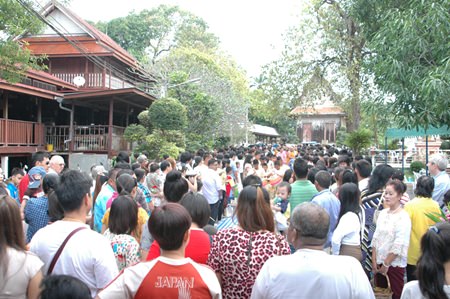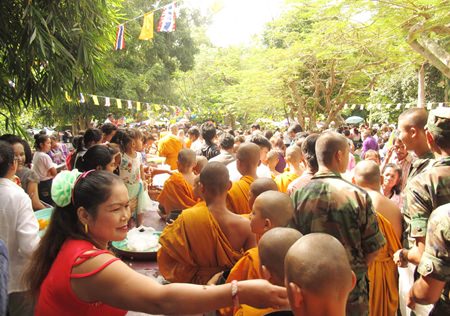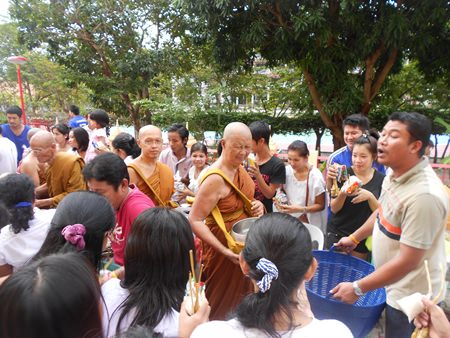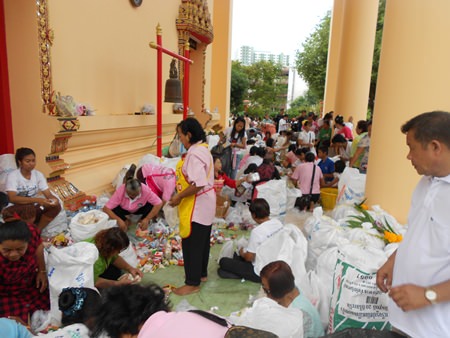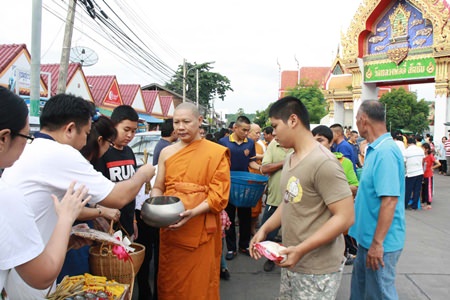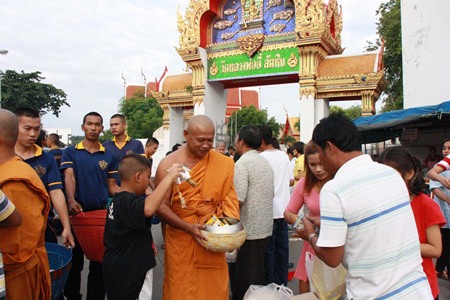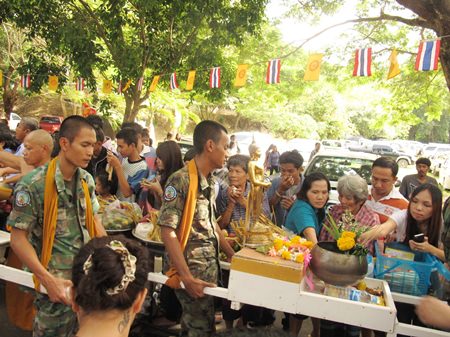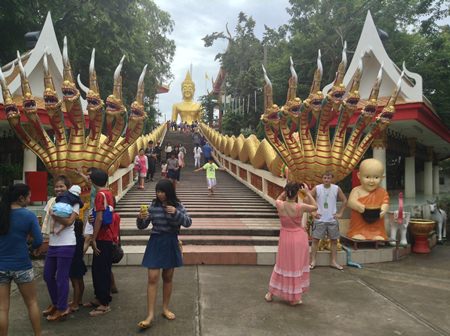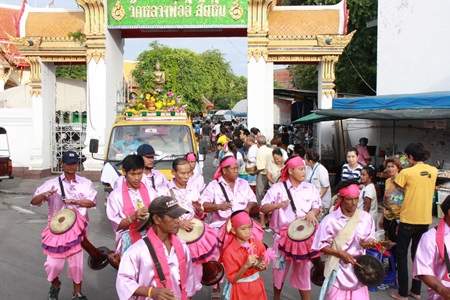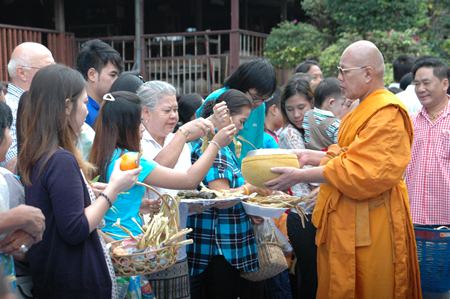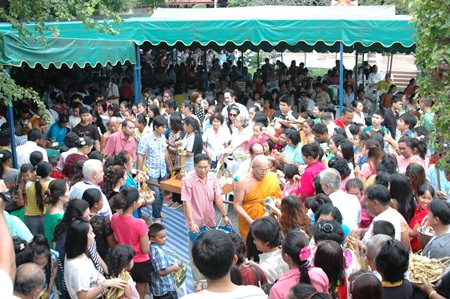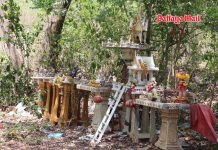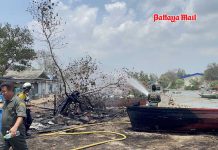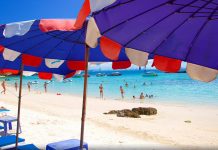The Eastern Seaboard marked the end of three months of Buddhist Lent with merit-making ceremonies and re-enactments of Lord Buddha’s return to earth from heaven.
Government officials and residents participated in the traditional Tak Bat Devo ceremonies at all local temples Oct. 19. Believers offered alms, listened to sermons, studied dharma and received blessings in hopes of gaining increased prosperity for them and their families.
Auk Pansaa marks the end of the three-month “rains retreat” where, traditionally, monks remain within temple walls to avoid trampling rice crops and to study dharma by candlelight. Things have progressed since the tradition began, but its roots remain pure in spirit. Buddhists welcome the monks back to society with presentations of meats and desserts.
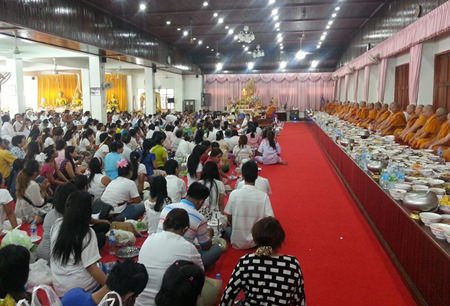 Buddhists offer alms at Wat Chaimongkol Phra Aaramluang, South Pattaya.
Buddhists offer alms at Wat Chaimongkol Phra Aaramluang, South Pattaya.
Just outside Pattaya, at Sattahip Temple, Abbot Wibulthummabaan led 110 monks and eight novices in a parade through Sattahip Market while District Chief Phawat Lertmukda joined 1,000 area residents making offerings of rice and dried food.
In Plutaluang, Anat Praphangkaro, abbot at Khao Baisri Temple, led 16 monks and 28 novices in a reenactment of Buddha’s return by descending from the hilltop. Members of the general public joined in by dressing as angels, lords and “yomaban,” or guardians of hell.
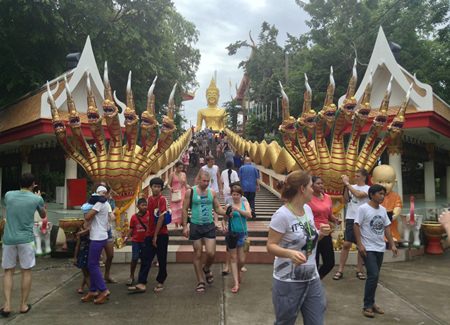 Citizens and Thai and foreign tourists pay their respects to Lord Buddha and make merit at Wat Khao Phra Yai on Pratamnak Hill.
Citizens and Thai and foreign tourists pay their respects to Lord Buddha and make merit at Wat Khao Phra Yai on Pratamnak Hill.
Tak Bat Devo, derived from the Sanskrit word “Devorohana,” is celebrated at the same time as Auk Pansaa, the end of Buddhist Lent. Almost always centered around a temple on a hillside, monks who’ve been in their “rains retreat” for three months emerged in a procession of golden gowns down the hill depicting the path Buddha took down a “celestial stairway” made of silver, gold and crystal.
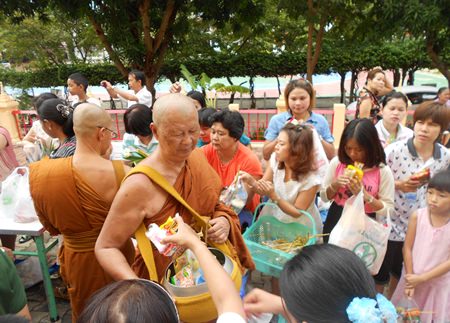 Pattaya Buddhists present rice during Auk Pansaa at Wat Bhodhisamphan.
Pattaya Buddhists present rice during Auk Pansaa at Wat Bhodhisamphan.
According to ancient tales, Buddha returned to his home in Kapilavastu seven years after achieving Nirvana and becoming the “Enlightened One.” At the start of Lent that year, in remembrance of his mother, Buddha ascended to the heavens to deliver a sermon to his mother. There he resided for three months.
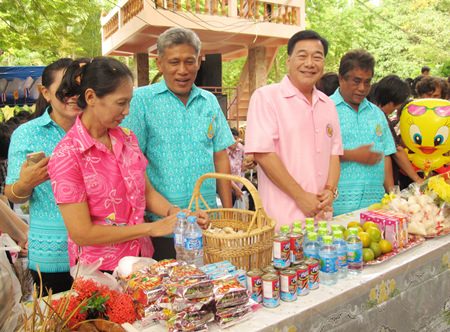 Sattahip Mayor Phawat Lertmukda (2nd right) leads Sattahip citizens to make merit during Auk Pansaa.
Sattahip Mayor Phawat Lertmukda (2nd right) leads Sattahip citizens to make merit during Auk Pansaa.
On the first day of the waxing moon of the eleventh lunar month Buddha returned to throngs of angels, disciples and followers who received him with offerings of food and other sacred items. Followers repeated his return in following years during a ceremony that has come to represent the Buddhist belief in reincarnation as much as its historical significance.
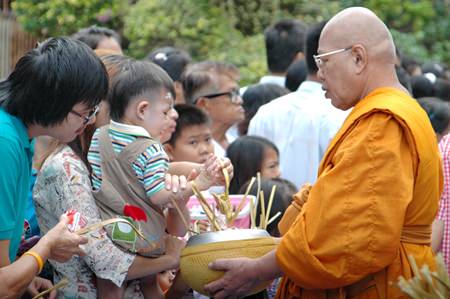 The Tak Bat Devo ceremony is another tradition that families can do good by making merit together.
The Tak Bat Devo ceremony is another tradition that families can do good by making merit together.
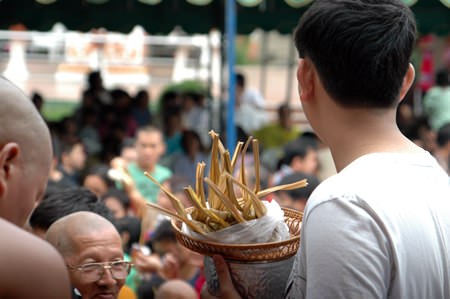 ‘Khao Tom Hang’ or ‘Luk Yon’, a dish that Buddhists present to monks during Auk Pansaa.
‘Khao Tom Hang’ or ‘Luk Yon’, a dish that Buddhists present to monks during Auk Pansaa.
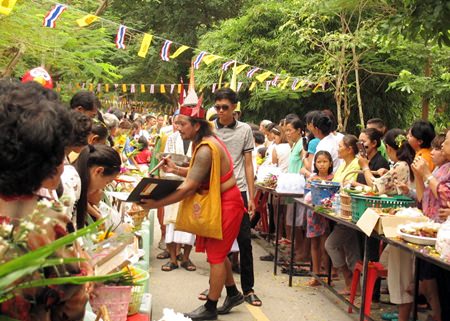 Yomaban dressed in red loincloth hold files and pens noting down names of those who had attended the Tak Bat Devo ceremony at Wat Khao Baisri, Sattahip.
Yomaban dressed in red loincloth hold files and pens noting down names of those who had attended the Tak Bat Devo ceremony at Wat Khao Baisri, Sattahip.
